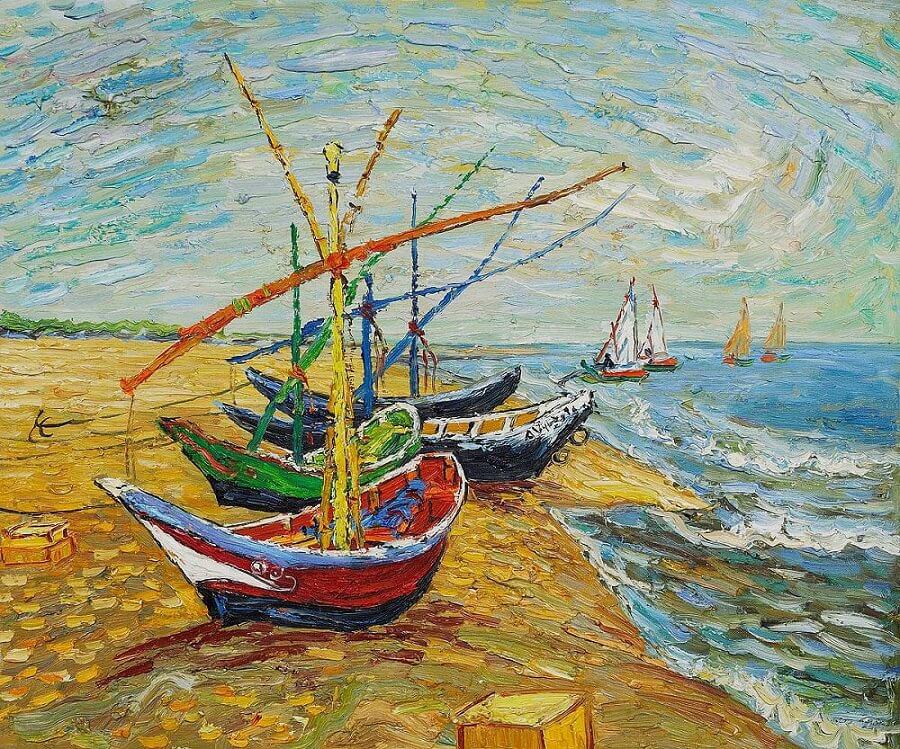Fishing Boats On The Beach, 1888 by Vincent Van Gogh

Van Gogh has described with joy his visit to the Mediterranean shore near Arles at the fishing village of Sainte-Maries, where he painted and drew for several days. It was a new world for him, and he responded to it with his usual eagerness and excitement.
In the picture of the fishing boats, two different kinds of vision are united in one work: nature is seen as light and airy, in countless tones of high-keyed color, ever-changing and vibrant through universal contrast; on the other hand, man's objects, the boats, drawn precisely and painted in flat airless tones of primary color. The pearly softness of the seascape becomes a setting for the hard, firmly compartmented colors of the boats. But these boats, disposed along the beach beside one another, overlapping and with crossing masts, make an intricate network of spots and colored lines, which participate in the unstable airy shiftings of the natural tones, in the irregular patterns of the seashore and the waves, and the vast currents of the shapeless clouds. This network of the boats is a typical pattern of Van Gogh's vision; it had appeared already in his Dutch period in the drawings of trees, and as in those early works the branchings of the boat are drawn with unflagging devotion to the detailed individual shapes.
The color ranges from the frank primary hues of the boats to tones of iridescence in the sky, with delicate blues, greens, and lavenders, and, on the beach, nameless sandy tones that are blendings of cool, neutralized yellow, tan, and brown. Just as the painting is Impressionist in the subtle discriminations and pairings of cool and warm, so in the application of the paint, there is a corresponding span from thin, flecked, and transparent touches to thick and matte.




















